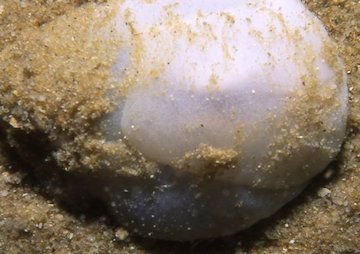391216-sea gizzards.jpg

Researchers recently looked at sand slug gizzards to find out how they work. Credit: Wikipedia, seascapeza
That disturbing packet of goodies that’s stuffed inside many turkeys includes the gizzard — something that few want to eat, but that’s essential to helping the turkey eat. It grinds up food before it passes into the stomach, aiding in the turkey’s digestion.
In fact, the gizzard is a common organ in many types of animals, including some fish and other marine creatures. One is a type of sea slug found in European waters, which feeds on tiny shellfish. And a team of researchers recently dug into its gizzard to find out how it works.
The scientists found that the gizzard consists of three hard plates, each of which is about the size of a B-B. Two of the plates are paired, so they look like mirror images of each other, while the third is on its own.
When the sea slug swallows its prey, the prey passes through the gizzard. The gizzard crushes the shell and feeds the debris into the stomach.
The researchers found that while the plates operate a bit like teeth, they’re structured differently. While the hardest layer of a tooth is at the surface, the hardest layer in the gizzard plates is about a thousandth of an inch below the surface.
Since they’re designed for crushing food instead of grinding it down, the plates might be too brittle if the hardest layer were at the top. Layering softer materials atop the harder ones gives the plates a bit of springiness that keeps them from shattering when they clamp down on shells. That allows the disgusting but necessary gizzard to help keep the sea slug fed.

